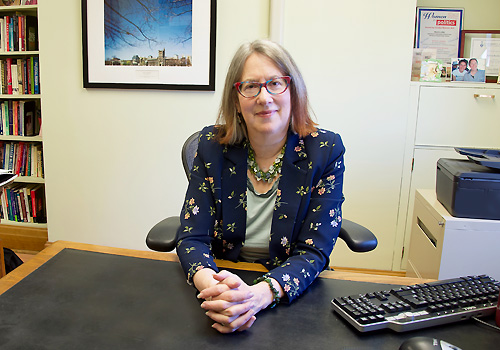On election day in December 1921, a rural schoolteacher named Agnes Macphail became Canada’s first female member of parliament. In the wake of the trailblazing MP’s landmark victory 100 years ago, how much progress has been made for women in Canadian politics?
The answer might be quite a lot — but not enough. Today, just over 30 per cent of MPs are women. It’s a definite indicator of progress, given that Macphail sat as the lone woman in the House of Commons for 19 long years. Still, equal representation for women is a long way off.
As of this year’s federal election, “we can find a glimmer of good news in the arrival of more women MPs, more Indigenous MPs and more MPs from diverse sexual orientations and racial backgrounds,” says Sylvia Bashevkin, a professor in the Department of Political Science in the Faculty of Arts & Science whose primary research focus is gender and politics, with an emphasis on women’s impact as public leaders. Still, she characterizes the improvement in women’s political progress as “uneven and slow.”
Seeing that all citizens are fairly represented — in fields such as the arts, science, business, law, medicine and academia — is considered essential for the optimal health of a diverse society. And because of the crucial change only governments can make, it can easily be argued that achieving parity in politics is most important of all.

In her 2009 book Women, Power, Politics: The Hidden Story of Canada’s Unfinished Democracy, Bashevkin wrote: "representative democracy seems impaired, partial and unjust when women, as a majority of citizens, fail to see themselves reflected in the leadership of their polity."
Moreover, women’s political participation at all levels is important: it is shameful to think that 100 years ago, many women in Canada were not even able to vote, much less run for office. A recent Globe and Mail article observed that at the time, most Indigenous women; Chinese women in Saskatchewan; and Japanese, Chinese and South Asian women in British Columbia remained unenfranchised.
And yet, do women invariably enter public life to advance women’s concerns? Not necessarily. Agnes Macphail, for example, was an MP from rural Ontario who campaigned as an agrarian populist intent on bettering the lives of farmers and labourers; she ended up directing attention toward conditions facing women in Canadian prisons, helping to found the Elizabeth Fry society.
It remains the exceptional woman legislator who advances women’s rights. This has not been a path to popularity either in Macphail’s time or our own.
Bashevkin says that after entering government, “women parliamentarians from progressive parties have in some cases found the content and style of debate were so exclusionary that they become reluctant champions of women’s rights.” She adds that “it remains the exceptional woman legislator who advances women’s rights. This has not been a path to popularity either in Macphail’s time or our own.”
In Canada today, the degree to which women are represented in federal politics varies by party. The federal NDP has formal quotas for women candidates while the Liberal Party has voluntary targets in place; 44 per cent of NDP and 36 per cent of Liberal MPs are women. Lacking any quota or target, the Conservative figure is 18 per cent.
Many barriers persist for women in public life, including funding, family constraints and political culture. Barriers can be worse for women of colour; before leaving their prominent public positions, Green Party leader Annamie Paul, Liberal cabinet minister Jody Wilson-Raybould, and NDP MP Mumilaaq Qaqqaq all said they had to fight racism as well as sexism while in office.
Another large obstacle, says Bashevkin, is the continued emphasis in public life on women’s personal characteristics, such as their appearance or social lives. Agnes Macphail faced constant insults about her sartorial choices and status as a single woman. In the House, one rival parliamentarian yelled at her to “get a husband.” Her reply? “How do I know he wouldn’t turn out like you?”
This misplaced attention, says Bashevkin, “has arguably been magnified by the visual emphasis of contemporary social media — the same channels which have disseminated violent threats against women in public life. Progressive women politicians seem to face the worst of these threats, as we saw in police reports on security challenges facing former Ontario premier Kathleen Wynne and former Alberta premier Rachel Notley.”
And yet in spite of everything, women are still attracted to politics: a field which inspires in them the most powerful hope that critical ideals can be achieved. Over the last few months, three Alberta cities (Calgary, Grande Prairie and Medicine Hat) elected women as mayors; Manitoba Conservatives selected a woman leader who is now the province’s first female premier; and Montreal mayor Valérie Plante was re-elected.
There is hope, then, on the horizon. As Agnes Macphail once said: “Most of the women who have offered themselves for public office over the years have done so, I believe, more because of the 'dirt' than in spite of it.”

